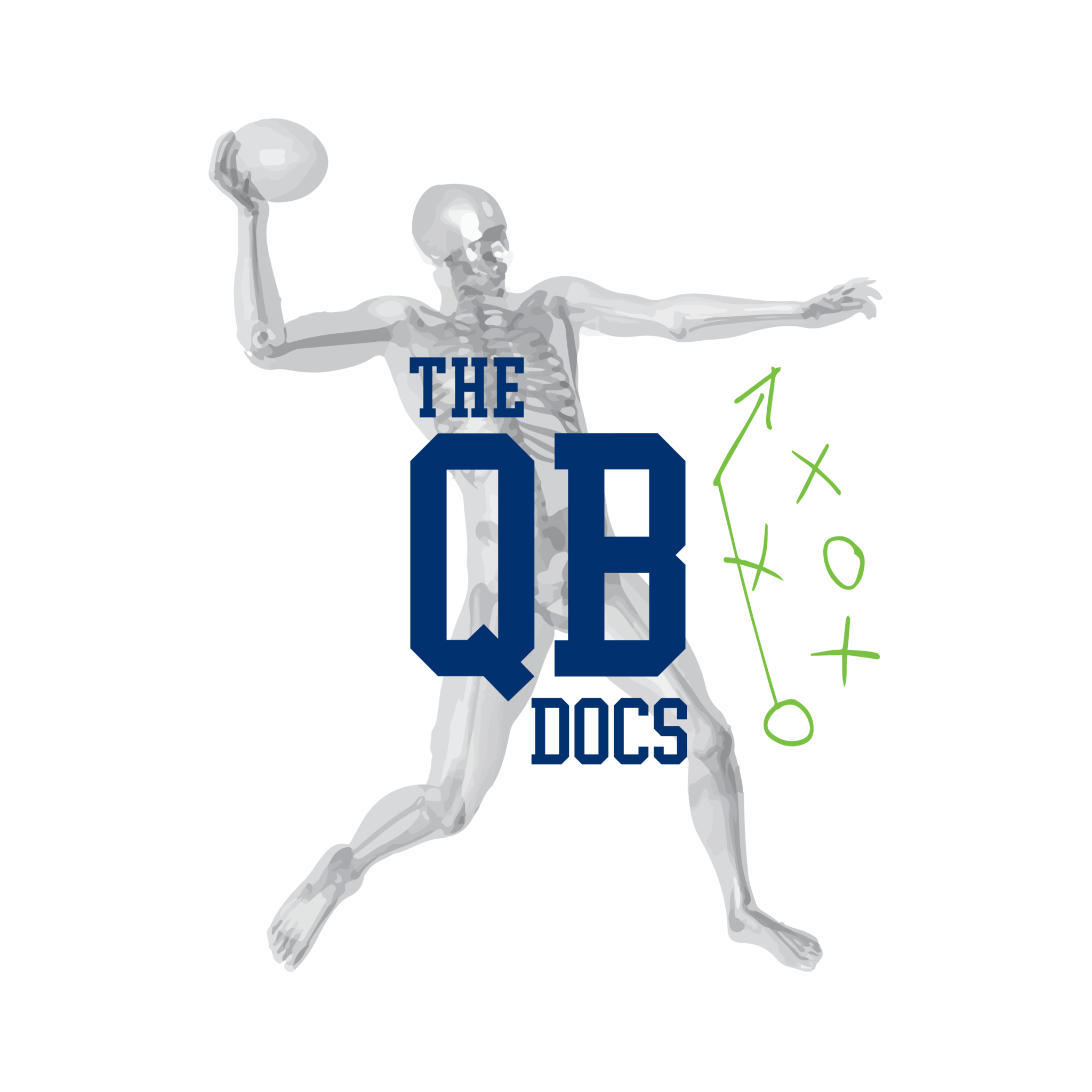Have you ever watched the detailed movement of a quarterback during a football game? He moves laterally when taking drops, sagittally when sprinting away from defenders, and does a mix of all 3 planes of motion when throwing the football. What allows quarterbacks efficient though? What are some of the weaknesses that quarterbacks have that they can fix pretty easily in order to have more success? We ALWAYS tell folks to start in the trunk/hip area and then work their way out. Check out today’s blog post to see why!
The femoroacetabular joint, or the hip joint, has the ability to move in 3 planes of movement which means it can move in 6 total directions. These directions are flexion/extension, abduction/adduction, and external rotation/internal rotation. Guess what quarterbacks? You use all of these movements during the throwing motion and need equal muscle relationships between the strength of the musculature that is performing all of these movements in order to be successful!
1. Hip Internal Rotation
Quarterbacks, please understand that this is one of the most common areas of dysfunction that we see from quarterbacks that can’t use their hips properly. During the late acceleration phase, the drive leg should be in a combination of hip extension and hip internal rotation in order to increase power from the ground up. There’s an all time great showed below that used internal rotation of his hips like a champ to produce force on the ball. Check out his hip position on the drive leg. There’s also a guy that y’all will recognize below that does the exact same thing and has a lot of success. These guys produce power from the ground up extremely well because the the essential internal rotation demand that is needed during the QB throwing motion.
What happens if players don’t have this range of motion or they throw differently. Well, they compensate! There’s guys in the NFL that have this issue still! They have become master compensators to where they have been able to work around the dysfunctions that they have and become efficient in those bad positions. Below is a perfect example of what I’m talking about. Marcus Mariota is an excellent player and an excellent athlete, but has been criticized because of his lack of accuracy over the past few years.
Do you notice the left lateral lean in Marcus’ torso? Why would he do this? Well, it’s because he has a stiff right hip. Notice how the foot position in the two guys above is different than the guy below. Marcus isn’t able to rotate through his hips all the way at the end of the acceleration phase which doesn’t allow the energy to be transferred up to the trunk as much. He hits a wall that he can’t break through because of the lack of range of motion. He performs a left lateral lean in order to try and propel the ball forward with this motion because of the inability to use the hip extensors all the way through. We call this “trailing leg syndrome”. We have a video below on the exact cause and what sorts of issues that will present if you have this.
2. Hip External Rotation Strength
Did you know that the hip has 8 deep external rotator muscles that help the gluteus medius perform external rotation of the hip? Well, you do! These 8 small muscles are essential to the hip because the act as a main stabilizer when athletes decelerate and then accelerate into the next movement. They allow proper knee and ankle position so athletes can absorb and produce force rapidly.
Why would we need the ability to absorb and produce force after we load though? Well, think about the quarterback in the back of a drop when he sets up in the pocket. He is either throwing in rhythm in which he needs a combination of eccentric strength in hip abduction and external rotation to absorb force, or he is hitching in which he still has to load his weight back on the drive foot before he drives forward.
Have you thought about a lot of the common throwing issues when guys load their weight? The first thing that you usually see is a right lateral lean where the left shoulder pops up before the quarterback throws. This is a direct result of instability in the lateral part of the right hip. You also see a left lateral lean during the acceleration phase as a compensation for instability. A lot of you are saying “well wait Drew, you mentioned that above.” Yes, yes i did! That’s why it’s so important to screen your players coaches. If you don’t you are guessing at where their problems actually lie, therefore performing movements and exercises that might not work for them. Below, you will see a great exercise that we have been using to strengthen the deep external rotators, but to also improve hip internal rotation while stabilizing with the hip abductors!
Do you see the amount of detail that is here when it comes to just the hips in quarterbacks? The law of specificity rings loud and clear in this case. This is why we believe in training quarterbacks the way that we do. Evaluate, implement, re-test, implement, improve, repeat! Reach out to us QB’s and QB coaches. We can help! If text/call is better, you can reach us at 812-343-4226.
– Drew Kiel PT, DPT, CSCS
